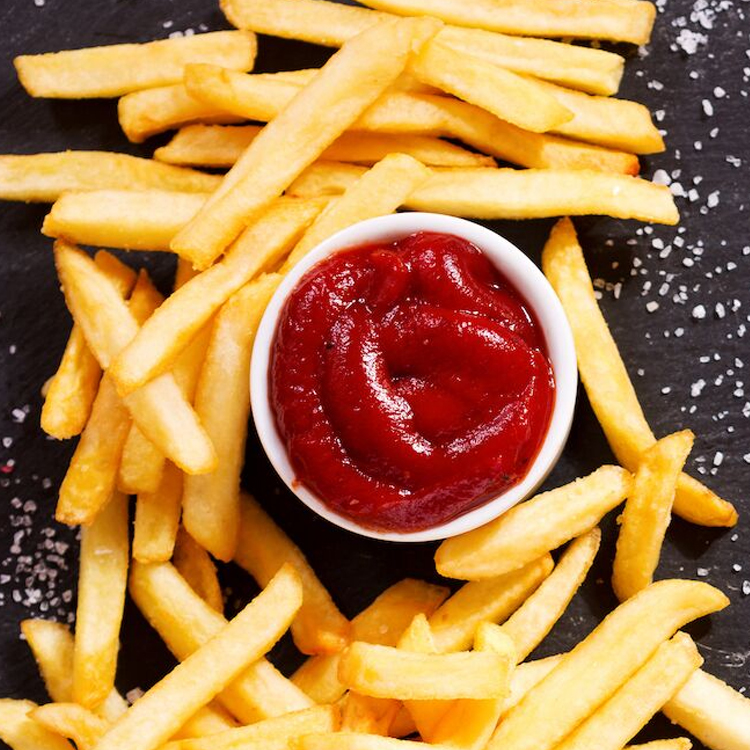
How to Remove Age Spots Naturally: A Complete Guide
Age spots are a common skin concern that affects many people as they age. These spots are known by different names, such as liver spots, solar lentigo, and senile lentigo. These small, darkened patches of skin can appear on various parts of the body, most commonly on areas that are frequently exposed to the sun. While age spots are generally harmless and not a reason for medical concern, they can be a source of aesthetic problems that are not easy to cope with. In this comprehensive guide, we will delve into the nature of age spots, their causes, and, most importantly, explore natural and effective ways to remove them.
As a starting point, let’s take a look at their causes and mechanisms of occurrence.
So, What Are Age Spots?
Age spots are the result of increased melanin production within the skin. Melanin is the pigment responsible for determining the color of our skin, hair, and eyes. When the skin is exposed to UV radiation for some time, it triggers an overproduction of melanin in localized areas as a natural defense mechanism. This excess melanin accumulates in the epidermis, the outermost layer of the skin, and forms clusters. These melatonin clusters result in the darkened patches we recognize as age spots.
In simple terms, age spots are the skin’s response to years of UV exposure, with melanin acting as a protective mechanism against further damage. These spots tend to be more prevalent in areas that receive the most sun exposure, such as the face, hands, arms, and shoulders.
Age Spots Causes and Risk Factors
Age spots develop due to prolonged exposure to ultraviolet radiation from the sun. When you spend years in the sun without adequate protection, UV radiation triggers a series of responses within your skin. Another causative agent is sunbathing in tanning beds.
Genetic predisposition plays a big role in age spot development. If your parents or grandparents had age spots, you may be more likely to develop them. Fair-skinned people are at higher risk, as their skin contains fewer melanocytes and thereby provides less protection against UV rays. Age is another risk factor, as melanin production decreases with age. Lastly, a history of frequent sunburns can increase your vulnerability to age spot formation.
How to Remove Age Spots Naturally?
In their desire to have clear and youthful skin, many people seek natural solutions to remove age spots. These annoying dark spots can be effectively treated through a range of home remedies and potent treatments. In the following lines, we will delve into the details of solutions for age spot removal.
Cryotherapy
Cryotherapy is a medical procedure that involves the application of extreme cold to the affected area. During the procedure, a dermatologist uses liquid nitrogen or another freezing agent to freeze the age spot. This freezing process destroys the melanocytes, which eventually leads to the spot fading and, in some cases, completely disappearing.
The procedure is relatively quick and usually doesn’t require anesthesia. It may cause some discomfort or a mild stinging sensation during and after treatment. After the age spot is frozen, a scab forms, which eventually falls off, leaving behind lighter and less pigmented skin. It’s essential to follow post-treatment care instructions. Keep the treated area clean and protected from the sun to minimize the risk of complications and ensure optimal results.
Although cryotherapy is considered an effective method for age spot removal, it may not be suitable for everyone. It’s essential to consult with a dermatologist to determine if cryotherapy is the right choice for your case and to discuss any potential risks or side effects associated with the procedure.
Hydrogen Peroxide
Hydrogen peroxide is a household disinfectant, bleaching agent, and the most famous age spot remover. However, it’s important to use it locally and with caution, as it can have potential risks and side effects. Diluting hydrogen peroxide with water creates a milder solution that is commonly used to remove age spots. Here’s how you can do it:
- Clean the affected area: Gently cleanse affected skin area with mild soap and water to remove any dirt or oils.
- Dilute hydrogen peroxide: Mix 3% hydrogen peroxide with water to create a 1.5% solution.
- Apply the solution: Using a cotton ball or swab, apply diluted hydrogen peroxide to the age spots.
- Allow it to dry: Let the solution dry on your skin.
- Moisturize and protect: After it dries, apply a moisturizer and sunscreen to protect your skin from further UV damage.
It’s crucial to be cautious when using hydrogen peroxide to remove age spots. Before you start, do the following:
- Patch test: Before applying it to larger areas, do a patch test on a small area of skin to ensure you don’t have an adverse reaction.
- Gradual use: Start with short applications and increase the exposure time gradually to avoid skin irritation.
- Sun protection: It’s essential to apply sunscreen daily when using hydrogen peroxide on age spots, as your skin will be more sensitive to UV radiation during treatment.
Vitamin C Serum
Vitamin C serum is a powerful age spot treatment. It works effectively by brightening and evening out your skin tone. When you apply a vitamin C serum to your skin, the high concentration of ascorbic acid (a form of vitamin C) gets absorbed into the deeper layers. Vitamin C is a powerful antioxidant, which means it helps protect your skin from the harmful effects of UV radiation and environmental pollutants, both of which contribute to age spot formation. Other than that, vitamin C inhibits the production of melanin, which gradually fades age spots and reveals a more even complexion.
To use vitamin C serum effectively for age spot removal, apply a few drops to clean, dry skin every day, ideally in the morning. Be patient, as results may take several weeks to become noticeable. Also, ensure you use sunscreen to protect your skin from further UV damage. As well as hydrogen peroxide, vitamin C can enhance your skin’s sensitivity to the sun.
Lightening Creams
Lightening creams typically contain active ingredients that reduce the appearance of dark spots. Here’s how they work and how to use them effectively:
When you apply a lightening cream to your skin, the active ingredients penetrate the epidermis, the outer layer of your skin. Many lightening creams contain ingredients like kojic acid, glycolic acid, or arbutin. These substances inhibit the production of melanin. Some of them, like hydroquinone, are particularly effective at reducing melanin production. To get rid of age spots with the use of lightening creams, follow these steps:
- Cleanse your skin: Start by washing the affected area with a gentle cleanser and patting it dry with a towel.
- Apply a small amount: Take a small amount of the lightening cream and apply it directly to the age spots. Avoid using too much cream, as it can cause irritation.
- Gently massage: Using your fingertips, gently massage the cream into your skin until it’s absorbed. Be careful not to rub too hard, especially if you have sensitive skin.
- Follow the instructions: Pay attention to the specific instructions on the product’s packaging regarding frequency and duration of use. Some products are meant for daily use, while others may require less frequent application.
- Sun protection: It’s crucial to use sunscreen while using lightening creams, as they can increase your skin’s sensitivity to UV rays.
- Be patient: Results may take several weeks or even months to become noticeable. It is important to use the product consistently.
DIY Masks for Removing Age Spots
Creating DIY masks at home is an effective and natural way to mitigate or remove age spots on hands, face, or body. These masks often include common household ingredients known for their skin-brightening and exfoliating properties. The most popular DIY solutions include:
Lemon Juice Mask
Lemon juice is rich in citric acid, which has bleaching properties. Squeeze fresh lemon juice and apply it directly to your age spots using a cotton ball. Leave it on for 15-20 minutes, then rinse it off with lukewarm water. Be cautious with lemon juice if you have sensitive skin, as it can irritate it.
Aloe Vera Gel Mask
Aloe vera is known for its soothing properties and can help fade age spots over time. Simply apply fresh aloe vera gel directly to the spots, leave it on for 30 minutes, and rinse it off with water. You can repeat this process every day.
Yogurt and Honey Mask
Yogurt contains lactic acid, which exfoliates the skin and helps reduce the appearance of age spots. Mix yogurt and honey to form a paste and apply it to your age spots. Leave it on for 20-30 minutes, then rinse it off with lukewarm water. Use this mask 2-3 times a week for the best results.
Papaya Mask
Papaya contains enzymes that can gently exfoliate the skin. Mash ripe papaya and apply it directly to age spots. Leave it on for 20-30 minutes, then rinse it off. You can use this mask 2-3 times a week.
Turmeric and Milk Mask
Turmeric has anti-inflammatory and skin brightening properties. Mix a small amount of turmeric with milk to form a paste. Apply this paste to your age spots, leave it on for 15-20 minutes, and rinse it off. Turmeric can stain the skin, so don’t use too much and avoid this mask if you have light skin.
Apple Cider Vinegar Toner
Apple cider vinegar helps balance the skin’s pH and reduce age spots. Mix equal amounts of water and apple cider vinegar to create a tonic. Apply it to your age spots using a cotton ball, leave it on for a few minutes, and then rinse it off. Start with a more diluted solution if you have sensitive skin.
Other Natural Ingredients You Can Use:
- Buttermilk
- Sandalwood
- Castor oil
- Horseradish
- Parsley
- Potato
- Saffron
- Neem leaves
- Almonds
- Mint leaves
- Rosewater
- Red lentils
- Licorice extract
- Sandalwood powder
A brief but important reminder: Always perform a patch test on a small area of your skin before applying any DIY mask to your face or other areas. If you experience any irritation or allergic reactions, discontinue use immediately.
Summing Up
Age spots can be a huge aesthetic problem for many people. Fortunately, there are many options for their successful reduction and, sometimes, complete elimination. If natural treatments don’t meet your expectations, you can consider cosmetic or medical solutions.
FAQ
What permanently removes age spots?
While various treatments and remedies can fade age spots, permanent removal is not always possible. Professional treatments like laser therapy, cryotherapy, or chemical peels can significantly reduce the appearance of age spots, but results may vary. The use of sunscreen and skincare products containing retinoids, antioxidants, and alpha hydroxy acids can prevent new age spots from forming. Although complete removal may be a challenging task, consistent care and the above-mentioned treatments can lead to a significant reduction in their visibility.
How does vinegar get rid of age spots?
The natural acidity and exfoliating properties of vinegar, especially apple cider vinegar, can fade age spots over time. When applied to the skin, the acid in vinegar breaks down the top layer of dead skin cells, which contain excess melanin. In most cases, noticeable results require the persistent use of vinegar during a longer period of time.
Do age spots go away naturally?
Age spots typically do not fade naturally, although some improvement may occur with better sun protection and skincare. However, significant removal usually requires specific treatments or remedies. Options like laser therapy, chemical peels, or topical treatments can effectively reduce the appearance of age spots. It is crucial to consult a dermatologist to determine the best approach and develop a personalized treatment plan.


